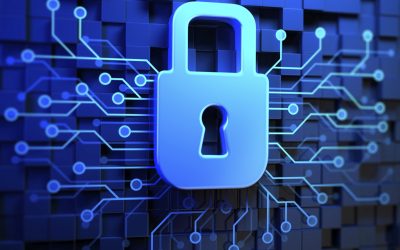Throughout this blog post, we have put together some of the latest industry insights from us and our vendors in KedronUK’s monthly Techbrief! This month we share with you information on Security Thoughts for 2025, Zero Trust Principles, AI- Powered Visibility, and much more.
KedronUK
Security Thoughts for 2025 (Blog Post)
Beyond AI, cybersecurity challenges continue to evolve. Effective vulnerability management requires more than just CVSS scores, and supply chain attacks highlight the need for greater scrutiny of third-party providers. Meanwhile, advancements in quantum computing could reshape encryption and cloud security.
As we navigate 2025, understanding these trends will be key to staying ahead in an increasingly complex digital landscape.
Please see the full blog here!
BullWall
Why Hospital Cybersecurity is More Than Protecting Patient Data. (Blog Post)
Today, hospitals are more than just medical facilities to be referred to for surgery or emergency healthcare needs; they’re complex ecosystems of interconnected services house value patient data.
Though modern medicine and the systems and servers used to store data have allowed quicker and safer patient care, they are also frequent targets of cybercriminals. Since the healthcare industry, especially hospital networks and medical facilities, is a frequent target of cyber-attacks, it is important to have a ransomware resilience tool prior to an attack.
If BullWall Ransomware Containment is in place when a cybercriminal attack happens, the spread will be halted, compromised devices will be instantly isolated, and encryption will be prevented. Find out more here.
Forescout
Zero Trust Principles: Address Asset Visualisation and Classification. (Blog Post)
Forescout has developed a step-by-step approach to realising Zero Trust security. They call it “The Adaptive Approach to Zero Trust Assurance,” and it’s designed to help meet zero trust mandates faster with a simplified transition roadmap. 2024 saw a rise in cyber threats and regulatory pressures. Personal liability for CISOs increased along with the number of audit requirements needed to prove compliance and quantify organisational exposure and risks.
To defend against these threats, organisations that want to be proactive must assume a breach mindset: Acknowledge the inevitability of a breach with active defences that minimize its impact.
It starts by addressing the most critical assets in the business with the principles of Zero Trust. Read more about Zero Trust here.
Infosim
KRITIS, DORA, NIS1 – Knowledge for Network Management. (Blog Post)
In an era of increasing cybersecurity risks and regulatory pressure, network operators must navigate a complex landscape of compliance frameworks. Three key regulations—KRITIS, DORA, and NIS 2—are shaping the future of network management and reporting requirements. While each framework serves a distinct purpose, they share common goals in strengthening resilience, cybersecurity, and operational stability across critical infrastructure. Understanding their differences and similarities is essential for network operators to ensure compliance and optimize their security strategies.
Find out more here.
Rapid7
MDR + SIEM: Why Full Access to Your Security Logs Is Non-Negotiable. (Blog Post)
Many Managed Detection and Response (MDR) providers promise world-class threat detection, but behind the scenes they lock away your security logs, limiting your visibility and control. It’s your data — so why don’t you have full access to it? Isn’t the whole point of security to see everything happening in your environment? Without full access to your own data, you’re left dependent on their tools, their timelines, and their interpretations of security events.
This isn’t just an inconvenience — it’s a risk.
Find out more about pairing MDR with SIEM here.
Keysight Technologies
The Sooner the Better: AI-Powered Visibility Accelerates Threat Detection and IT Operations. (Blog Post)
We expect Artificial intelligence (AI) to speed up processes and drive down costs, and that seems to be what’s happening in cybersecurity. A recent survey found that 1 in 5 organizations now use AI in their cybersecurity practices, and their investments paid high dividends on multiple fronts – like faster threat detection, lower breach costs, and reduced strain on overworked SOC teams.
After a quick update on the role and value of AI, Keysight introduce a new generation of AI-powered network visibility and explain why applying AI earlier in the process helps to find threats faster and give defenders an even greater advantage.
Read more here.
ExtraHop
Malicious Use of RMM: Remote Monitoring and Management. (Blog Post)
Network detection and response (NDR) refers to cybersecurity products that ingest and analyse network traffic to detect malicious activity. Where endpoint detection and response (EDR) tools collect and analyse endpoint data and behavior, network detection and response solutions work off wire data from network packets traversing the east-west and north-south corridors.
According to Gartner®, “Network detection and response (NDR) products detect abnormal system behaviors by applying behavioral analytics to network traffic data. They continuously analyse raw network packets or traffic metadata within internal networks (east-west) and between internal and external networks (north-south).
Find out more about NDR here.

Kirsty Jones
Marketing and Brand Development Lead
Spreads the word further and wider about how we can help connect and visualise your IT Ops and Sec Ops data.

